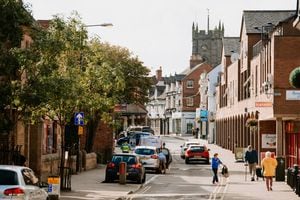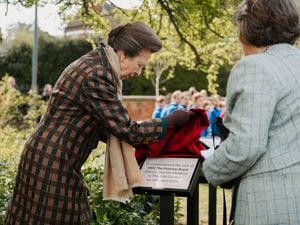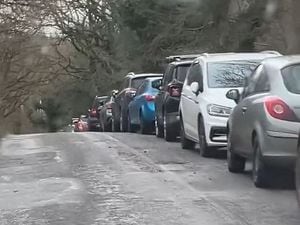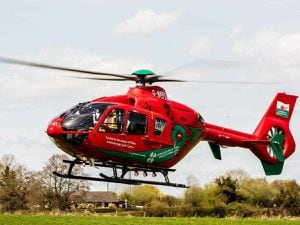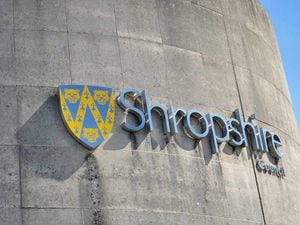Ancient Market Drayton photo was court case exhibit
This is Exhibit A.
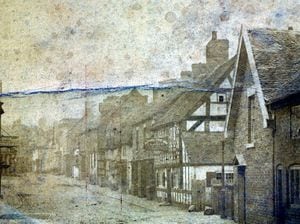
It really is, as this photo which we used a little while ago and asked whether it was the oldest picture of Market Drayton turns out to have been an exhibit in a Victorian legal case.
The photo is looking up Cheshire Street towards the Buttercross and is perhaps 1850s or 1860s, and in any event before 1870 when the Drovers' Arms on the left was replaced by a bank, which became the NatWest.
And after seeing our picture Mr Edward Sillitoe of Market Drayton got in touch to reveal an interesting twist.
"I recognised it as being the same picture that I found two badly faded copies of while clearing out my late grandparents’ house last year," said Mr Sillitoe. – it's his faded and battered copy we've published this time.
"This is where it gets interesting though, because one copy appears to have been used as evidence in an 1876/77 legal case."
It's this battered and faded copy we've published this time.
He continued: "It is marked on the front as exhibit 'a' and is stamped, ‘JABEZ JONES’ on the mount. On the reverse is an intriguing, handwritten, inscription: '1876. 73.579. In the High Court of Justice. Chancery Division. Master of the Rolls. Between George Underhill Beeston and Robert Carey Thursfield – Plaintiffs And The John Rodenhurst Limited – Defendants. That is the Photograph marked “a” referred to in the Affidavit of Jabez Clevere Jones swore in this cause or matter this tenth day of January 1877, Before us – (followed by an illegible signature).'"
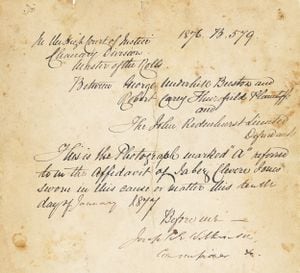
Mr Sillitoe added: "I have been trying to work out what the meaning of this is and, so far, I have found a few clues but not the full story.
"The Chancery Division of the High Court hears cases involving business and property disputes, so this appears to have been evidence used in such a dispute.
"John Rodenhurst operated the Eagle (or Raven) foundry making agricultural implements in Cheshire Street which, according to a plaque on the current 1970s building on the site, was also built in 1877. It would have replaced several of the buildings on the right-hand side of this picture.
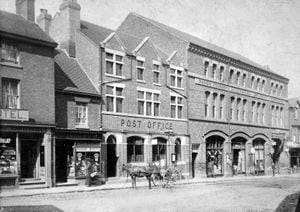
"A Jabez Jones registered copyright of some photographs of Adderley Hall in 1864 so, when taken with his name stamped on the front, could he have been the photographer?
"I’ve not been able to find any references online to Beeston and Thursfield, or what their case against Rodenhurst was, but it seems plausible that it had something to do with the construction of their new building.
"If any of your readers can shed any light on this case, and the significance of the picture, it would be fascinating to know.
"The other mystery is how the picture came to be in my grandparents’ possession. I doubt we’ll ever know, but both copies were in among some papers which appear to have been saved by my Granddad Sillitoe when he cleared out the home which was occupied for a long time by his parents and grandparents.
"The latter would probably have remembered this view of Cheshire Street so perhaps the photos were discarded when their original purpose was complete, and at some point my great-great-grandparents obtained them out of nostalgia for their own early years."
To this we can add a little extra information, in that the newly-built premises of John Rodenhurst Ltd on the right hand side of the street were opened on September 5, 1877, which would chime with Mr Sillitoe's theory that the case was a dispute relating to the building of the works – perhaps the photo was used as evidence of "the way things were."
While doing the excavations the labourers came across two large boulders, one weighing over a ton, and local geologists speculated on how they got to be there.
The Rodenhurst building was itself demolished in the early 1970s and replaced with a building which imitated its distinctive arches.
With the exception of the distant Buttercross, today's Cheshire Street is unrecognisable compared to that mid-Victorian view. The disappeared half timbered Royal Oak pub on the right dated from 1652.
